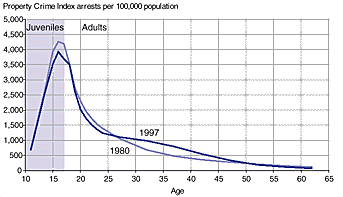|
Most arrested juveniles are referred to court In most States, some persons below the age of 18 are, due to their age, or by statutory exclusion of certain offenses from juvenile court jurisdiction, under the jurisdiction of the criminal justice system. For those persons under age 18 and under the original jurisdiction of their State's juvenile justice system, the FBI's UCR Program monitors what happens as a result of the arrest. This is the only instance in the UCR Program in which the statistics on arrests coincide with State variations in the legal definition of a juvenile. In 1997, 25% of arrests involving youth that were eligible in their State for processing in the juvenile justice system were handled within the law enforcement agency, and then the youth was released. The FBI reports that 67% of juvenile arrests were referred to juvenile court, and 7% were referred directly to criminal court. The others were referred to a welfare agency or to another police agency. The proportion of arrests sent to juvenile court has gradually increased from 1980 to 1997. In 1997, the proportion of juvenile arrests sent to juvenile courts was similar in cities and suburban areas (66%) and somewhat greater in rural counties (70%). The proportion of juvenile arrests sent directly to criminal court in 1997 (7%) was the highest in the last two decades.
| |||||||

